Hydrogeology
GPR for hydrogeological studies
GPR for hydrogeological studies

Identification of underground flows and reservoirs of water
Hydrogeological characterization
Identification of areas of greater reservoir capacity
Characterization of the structural environment.
Identification of buried river valleys.
The buried river valleys are the most productive source of drinking water. These underground valleys can be found at different depths of the surface under different sediments. The water can be located in permeable rocks such as sands, gravels or limestones, and surrounded by impermeable rocks (what are called 'confined aquifer').
The GPR allows the detection of faults, which are usually a source of water. Often, the river valleys fit into tectonic faults. This can be seen in the figure below: there is a clear connection between the fault and the river valley. We can identify structural and paleogeographical regularities from certain types of geoelectric sections.
High permittivity of water results from dipole characteristic of water molecules leading to high polarisability.
High polarisability is lost when water is frozen.
General mixing law for a multi-component rock
system (Birschak et al. 1974) can be applied:
ε=∑/n(V_i∗ε_i)
Vi, ε_i volumetric content and permittivity of each component (rock matrix, pore water, etc.)
A special case is given by Schön (1996):
1. Because of high dielectric permittivity of water the level of water table presented as good reflection surface.
2. Wave velocity will decrease in aquifer because of:
V=c/√εGPR is useful for groundwater detection.
The groundwater can be detected in different geological structures
because of specific dielectric properties of water rich deposits
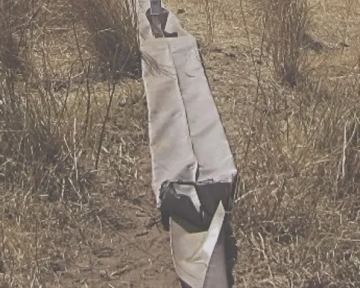
The water table can be detected very clear.
Changes in wave pattern can be detected in aquifer and deeper.
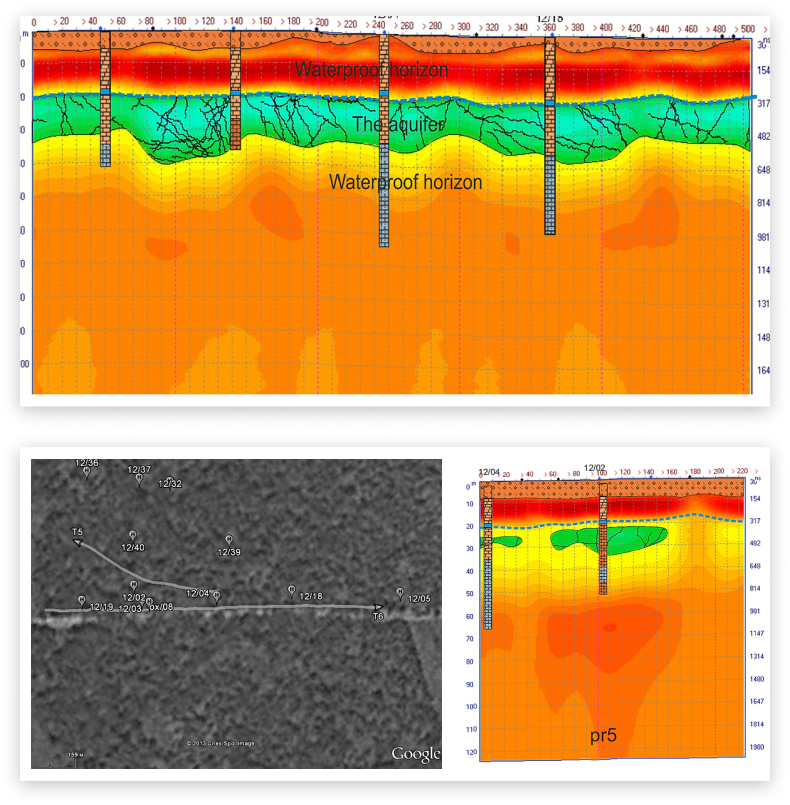
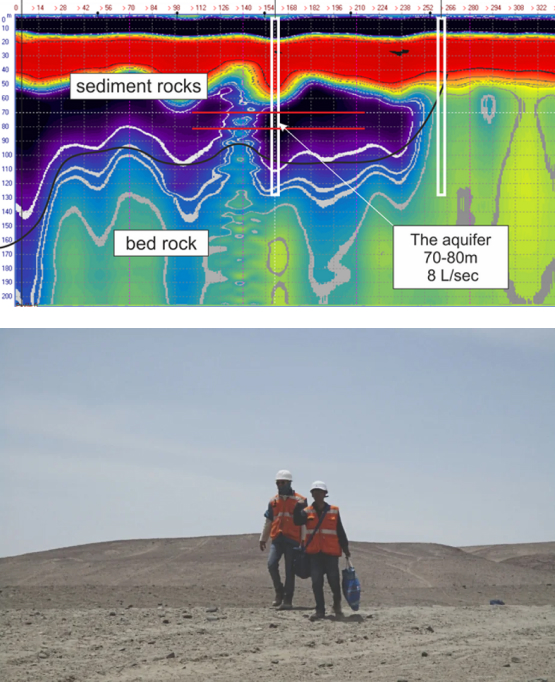
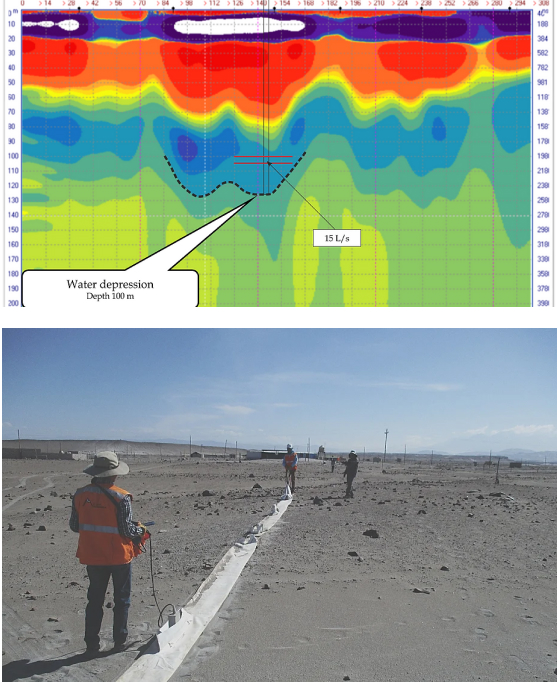
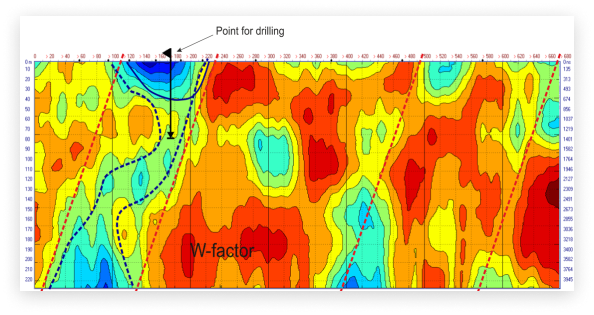
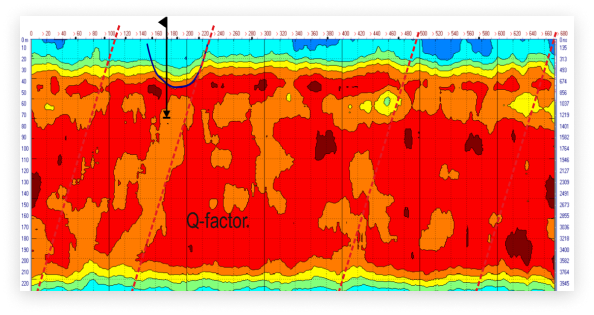
Q-factor - The ratio of the central frequency of the signals spectrum to its bandwidth
Radarogram signals –Amplitudes of signals of GPR profile
W-factor - Volumetric water content
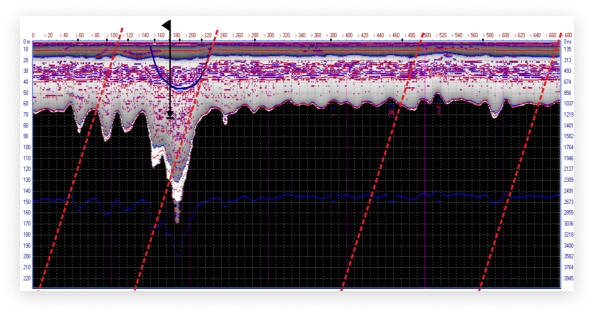

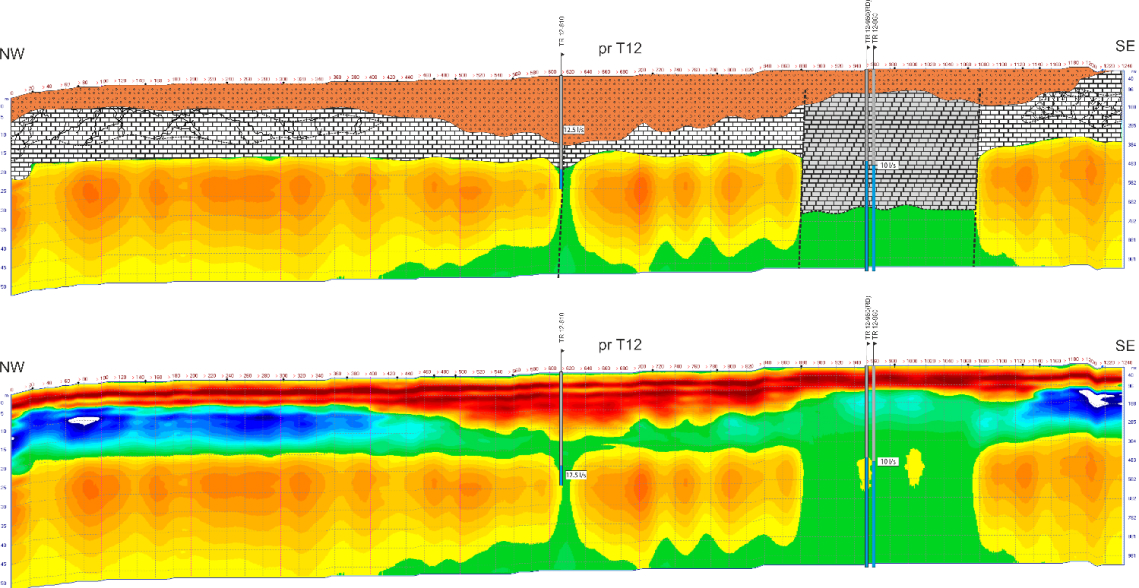
Borehole TR 12-960 was drilled based on results of the GPR traverse 12, the anomaly was interpreted to be a fault/shear zone approximately 200 m wide. The geological map for thesite confirms the shear zone which strikes in a north easterly direction. The borehole was drilled to a final depth of 60 m at a diameter of 8 inches, then further reamed to a 12 inch diameter in order for casing to be installed. During drilling dolomites and limestone was intersected, with a large cavity identified between 40 and 60 m bgl. The main water strike was intersected at 27 m bgl in a fractured zone above the main cavity zone and the preconstruction blow yield was 10 l/s (with air loss).
Borehole TR 12-960 (RD) was drilled approximately 10 m north of borehole TR 12-960 as a replacement borehole. The borehole was drilled to a final depth of 60 m at a diameter of 8 inches. The borehole intersected dolomitic sedimentary rock units and limestone, with the main water strike at 25 m bgl within a fractured zone yielding approximately 10 l/s (with air loss). The drillers were unable to construct the borehole due to surface blow out.
Borehole TR 12-610 was drilled based on a vertical anomaly identified on GPR traverse 12. Based on interpretations of the GPR data and geology maps available for the area the anomaly is most likely to be related to the shear zone targeted by boreholes TR 12-960 and TR 12-960 (RD). During drilling dolomitic siltstone and shale was intersected, as well as limestone at depth. The borehole was drilled to a final depth of 36 m and further reamed to 12 inch diameter up to 30 m. The borehole was constructed using 18 m of slotted and 10 m of solid steel 8 inch diameter casing. The main water strike was within a highly fractured zone at 25 m bgl and the final blow yield was 12.5 l/s.